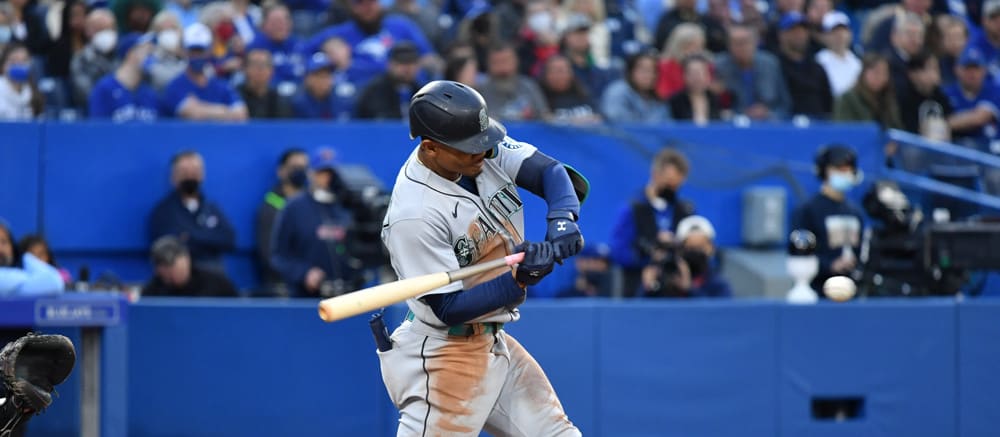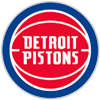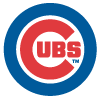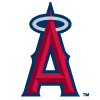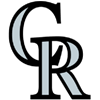The most important thing to happen in baseball in the last few days probably wasn't the arrival of Nolan Schanuel just 40 days after the Angels selected him 11th overall in the draft. Schanuel's arrival wasn't even the most important thing that happened on his own team, with that honor going to Shohei Ohtani's torn UCL.
It was arguably the most interesting, however, as we just don't see something like this very often. Per Baseball America, Schanuel's arrival is the fifth-fastest for a position player since the draft began in 1965. This century, Ryan Zimmerman, Richie Weeks, Conor Gillaspie and Xavier Nady were the only other hitters to debut the same season in which they were drafted. That quartet doesn't necessarily offer the most confidence that Schanuel's quick debut foreshadows a long and successful career. Zimmerman, of course, was one of the better hitters of his generation, and Weeks' 18 career WAR is nothing to sneeze at, but both Gillaspie and Nady retired with fewer than five WAR to their names.
The subject of rookie debut timelines has become particularly interesting over the last two seasons, as the new Collective Bargaining Agreement added incentives for teams to call up their top prospects early. Teams whose players finish high in Rookie of the Year voting can earn an extra draft pick provided they promoted the player early enough to earn a full year of service, while players who do well in award voting can score that full year of
The most important thing to happen in baseball in the last few days probably wasn't the arrival of Nolan Schanuel just 40 days after the Angels selected him 11th overall in the draft. Schanuel's arrival wasn't even the most important thing that happened on his own team, with that honor going to Shohei Ohtani's torn UCL.
It was arguably the most interesting, however, as we just don't see something like this very often. Per Baseball America, Schanuel's arrival is the fifth-fastest for a position player since the draft began in 1965. This century, Ryan Zimmerman, Richie Weeks, Conor Gillaspie and Xavier Nady were the only other hitters to debut the same season in which they were drafted. That quartet doesn't necessarily offer the most confidence that Schanuel's quick debut foreshadows a long and successful career. Zimmerman, of course, was one of the better hitters of his generation, and Weeks' 18 career WAR is nothing to sneeze at, but both Gillaspie and Nady retired with fewer than five WAR to their names.
The subject of rookie debut timelines has become particularly interesting over the last two seasons, as the new Collective Bargaining Agreement added incentives for teams to call up their top prospects early. Teams whose players finish high in Rookie of the Year voting can earn an extra draft pick provided they promoted the player early enough to earn a full year of service, while players who do well in award voting can score that full year of service even if their teams tried to keep them down long enough to deny them.
The new rules were likely part of the reason Corbin Carroll and Gunnar Henderson got to debut in late August of last year rather than waiting until late April of this season. Those two are clear favorites for their respective Rookie of the Year awards, so it's unlikely the Diamondbacks or Orioles regret their decisions. Among the players who have the top five best award odds in each league, Triston Casas, Josh Jung and Spencer Steer also debuted last year.
That was only the first year of the new rules, so whether that reflects a new reality that's here to say is something worth watching. If last year was any indication, we could see a handful of interesting talent join the player pool over the next week or two. (Check out Chris Crawford's Imminent Arrivals column for the top candidates.) If we are indeed entering a new era of aggressive promotions, exemplified both by last year's call-ups and Schanuel's lightning-fast arrival, that bodes well for fans and for fantasy players, as few things in the game are as fun as determining just how excited to be about a debuting player.
If all goes well, several of those players who are about to debut will feature as risers over the final few weeks of the year. Maybe even Schanuel himself, who has no extra-base hits over his first six games but who has seven walks to just two strikeouts. For now, we'll move onto a set of risers that's particularly heavy on second-year players, starting with last year's AL Rookie of the Year.
RISERS
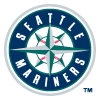 Julio Rodriguez, OF, Mariners: There were reasons to worry about Rodriguez in the early part of this season. Not worry in the sense that he'd been found out and was no longer a star, but worry in the sense that his ascent to superstardom might not be as smooth as it seemed after he burst through the door with a 5.4-WAR season as a 21-year-old rookie. As late in the year as May 21, Rodriguez still had a .656 OPS, and two months later, he'd only pulled that mark up to .707, with his .244/.311/.396 line on July 21 marking him as exactly average per wRC+. A switch flipped at that point, however, as he homered four times in his next five games and has produced a 200 wRC+ over his last 27, the product of a .381/.414/.667 slash line. A .460 BABIP over that run has no doubt inflated his numbers somewhat, but his 56.8 percent hard-hit rate means that a high BABIP is to be expected. Rodriguez has gotten more aggressive during this hot streak, with his swing rate both inside and outside the zone jumping by about four points compared to his already elevated marks up to that up point. That means those hoping Rodriguez would add plus plate discipline to his game — arguably the only thing he lacks at this point — may have to wait a while longer, as Rodriguez is unlikely to change an approach that is serving him so well.
Julio Rodriguez, OF, Mariners: There were reasons to worry about Rodriguez in the early part of this season. Not worry in the sense that he'd been found out and was no longer a star, but worry in the sense that his ascent to superstardom might not be as smooth as it seemed after he burst through the door with a 5.4-WAR season as a 21-year-old rookie. As late in the year as May 21, Rodriguez still had a .656 OPS, and two months later, he'd only pulled that mark up to .707, with his .244/.311/.396 line on July 21 marking him as exactly average per wRC+. A switch flipped at that point, however, as he homered four times in his next five games and has produced a 200 wRC+ over his last 27, the product of a .381/.414/.667 slash line. A .460 BABIP over that run has no doubt inflated his numbers somewhat, but his 56.8 percent hard-hit rate means that a high BABIP is to be expected. Rodriguez has gotten more aggressive during this hot streak, with his swing rate both inside and outside the zone jumping by about four points compared to his already elevated marks up to that up point. That means those hoping Rodriguez would add plus plate discipline to his game — arguably the only thing he lacks at this point — may have to wait a while longer, as Rodriguez is unlikely to change an approach that is serving him so well.
 Spencer Torkelson, 1B, Tigers: The following is a brief list of factors that might make you consider remaining in on a player even when his performances give clear signs you should be out:
Spencer Torkelson, 1B, Tigers: The following is a brief list of factors that might make you consider remaining in on a player even when his performances give clear signs you should be out:
- He was very recently a very high draft pick
- He was at or near the top of prospect lists throughout his minor-league career
- He's just 23 years old
- His team has no reason not to let him work through his struggles in an everyday role
All four factors are true of Torkelson, who's finally showing signs of justifying the first-overall pick the Tigers spent on him in the 2020 draft. After hitting just .203/.285/.319 (good for a 76 wRC+) with a mere eight homers in 110 games as a rookie last season, Torkelson's .218/.298/.360 line (82 wRC+) with eight homers across his first 76 games this year did technically represent progress, but it wasn't nearly enough to count as living up to expectations. A switch seemed to flip at the tail end of June, however, as he homered three times against the Rangers in the final series of the month, kicking off a stretch which has seen him hit .273/.355/.602 (160 wRC+) with 15 homers in his last 47 games. This is no BABIP-fueled fluke, as he owns a .287 mark in that category, but rather the result of the fact that his quality of contact has gone from good to great. He owns a remarkable 20.8 percent barrel rate and 58.5 percent hard hit rate over his excellent run, well above the 9.5 percent barrel rate and 44.3 percent hard hit rate he owned for his career up to that point.
 Kerry Carpenter, OF, Tigers: We'll stick with the Tigers, who have a couple pieces trending in the right direction despite a season that again looks set to see the team finish well below .500. Carpenter has none of Torkelson's pedigree, as he was selected 562nd in 2019 draft, but he's also had none of Torkelson's struggles, flashing potential with a .252/.310/.485 line (126 wRC+) in 31 games as a rookie last season. That line came with a poor 28.3 percent strikeout rate and 5.3 percent walk rate, however, so between his lack of pedigree and his lack of plate discipline, you could be forgiven for ignoring him early in the year. The time to stop ignoring him came sometime during the first three months of the season, though the 26.8 percent strikeout rate and 6.3 percent walk rate that accompanied his .267/.317/.489 line over that stretch meant doubts were still justified. Carpenter's performance since the start of July should erase any lingering doubts, however. Not only has he hit .304/.372/.588 (163 wRC+) with 12 homers over that stretch, he's done so while improving his walk rate to 7.9 percent and while cutting his strikeout rate to 18.3 percent. Carpenter has shown legitimate power (11.6 percent career barrel rate) throughout his brief big-league tenure, so he could become a nearly complete hitter if his plate discipline gains stick around.
Kerry Carpenter, OF, Tigers: We'll stick with the Tigers, who have a couple pieces trending in the right direction despite a season that again looks set to see the team finish well below .500. Carpenter has none of Torkelson's pedigree, as he was selected 562nd in 2019 draft, but he's also had none of Torkelson's struggles, flashing potential with a .252/.310/.485 line (126 wRC+) in 31 games as a rookie last season. That line came with a poor 28.3 percent strikeout rate and 5.3 percent walk rate, however, so between his lack of pedigree and his lack of plate discipline, you could be forgiven for ignoring him early in the year. The time to stop ignoring him came sometime during the first three months of the season, though the 26.8 percent strikeout rate and 6.3 percent walk rate that accompanied his .267/.317/.489 line over that stretch meant doubts were still justified. Carpenter's performance since the start of July should erase any lingering doubts, however. Not only has he hit .304/.372/.588 (163 wRC+) with 12 homers over that stretch, he's done so while improving his walk rate to 7.9 percent and while cutting his strikeout rate to 18.3 percent. Carpenter has shown legitimate power (11.6 percent career barrel rate) throughout his brief big-league tenure, so he could become a nearly complete hitter if his plate discipline gains stick around.
 Jake Burger, 3B, Marlins: Burger is a great story, bouncing back from having played zero professional games from 2018 through 2020 due to a pair of Achilles tears to emerge as a solid regular for the White Sox, but his lopsided .214/.279/.527 line this year prior to his move to Miami wasn't entirely convincing. His power — 25 homers and a 19.6 percent barrel rate before the deal — was inarguable, but his contact concerns were significant. Through the end of June, he was striking out 33.6 percent of the time, a number that looks even worse next to a 4.7 percent walk rate. Perhaps the Marlins saw his 26.4 percent strikeout rate (and 12.1 percent walk rate) in July and decided they were confident he could make enough contact to keep getting to his power, or perhaps they were just taking a shot on a guy who'd shown one big skill. Either way, they have to be happy with Burger's .373/.440/.552 performance from his first 18 games with the team. It's very BABIP-inflated (.442), but the fact that his strikeout rate is just 17.3 percent is very encouraging. Each week that Burger continues to strike out at a reduced clip makes it easier to believe in his bat holding up long-term, and going the rest of the second half making this kind of contact could do a lot for his draft-day value in 2024.
Jake Burger, 3B, Marlins: Burger is a great story, bouncing back from having played zero professional games from 2018 through 2020 due to a pair of Achilles tears to emerge as a solid regular for the White Sox, but his lopsided .214/.279/.527 line this year prior to his move to Miami wasn't entirely convincing. His power — 25 homers and a 19.6 percent barrel rate before the deal — was inarguable, but his contact concerns were significant. Through the end of June, he was striking out 33.6 percent of the time, a number that looks even worse next to a 4.7 percent walk rate. Perhaps the Marlins saw his 26.4 percent strikeout rate (and 12.1 percent walk rate) in July and decided they were confident he could make enough contact to keep getting to his power, or perhaps they were just taking a shot on a guy who'd shown one big skill. Either way, they have to be happy with Burger's .373/.440/.552 performance from his first 18 games with the team. It's very BABIP-inflated (.442), but the fact that his strikeout rate is just 17.3 percent is very encouraging. Each week that Burger continues to strike out at a reduced clip makes it easier to believe in his bat holding up long-term, and going the rest of the second half making this kind of contact could do a lot for his draft-day value in 2024.
 Brandon Pfaadt, SP, Diamondbacks: Has Pfaadt pfinally been pfixed? The 24-year-old righty was one of the most-hyped rookie pitchers during draft season, though like Grayson Rodriguez (5.44 ERA), Hayden Wesneski (bumped to bullpen) and Andrew Painter (Tommy John surgery), he hasn't lived up to expectations overall. That may finally have changed over his last handful of outings, however. Compare Pfaadt's numbers from his six MLB starts prior to the break with his six starts thus far in the second half:
Brandon Pfaadt, SP, Diamondbacks: Has Pfaadt pfinally been pfixed? The 24-year-old righty was one of the most-hyped rookie pitchers during draft season, though like Grayson Rodriguez (5.44 ERA), Hayden Wesneski (bumped to bullpen) and Andrew Painter (Tommy John surgery), he hasn't lived up to expectations overall. That may finally have changed over his last handful of outings, however. Compare Pfaadt's numbers from his six MLB starts prior to the break with his six starts thus far in the second half:
| Period | IP/GS | K% | BB% | GB% | HR/9 | ERA | FIP | WHIP |
|---|---|---|---|---|---|---|---|---|
| First Half | 4.3 | 17.2% | 8.2% | 26.7% | 3.2 | 9.82 | 7.48 | 1.87 |
| Second Half | 6.0 | 23.3% | 6.2% | 35.6% | 1.3 | 3.50 | 4.02 | 1.08 |
| League Average (SP only) | 5.2 | 22.0% | 7.8% | 41.8% | 1.3 | 4.44 | 4.42 | 1.31 |
The first version of Pfaadt we saw this year simply couldn't put big-league hitters away. His low strikeout rate meant he was allowing far too much contact, and his startlingly low groundball rate meant that far too much of that contact went for extra bases, typically home runs. That low groundball rate was a known worry based on his minor-league numbers, but to see his strikeout rate come in at such an unimpressive mark was a real disappointment for a player who posted a strikeout rate north of 30 percent at both Double-A and Triple-A last season. He's still by no means an elite strikeout guy, but the version of Pfaadt we've seen recently is slightly above-average in both strikeouts and walks, and has a much less worrisome groundball rate. The fact that his improvement in performance comes with a shift in pitch mix — Pfaadt's slider usage jumped from 22.5 percent to 31.6 percent after the break — makes it easier to buy into his improvement as a genuine sign of development rather than a mere hot streak.
 Dane Dunning, SP, Rangers: Here's a stat I don't know what to do with: Dunning has reached double-digit strikeouts in three of his 19 starts this season but has struck out no more than six batters in any of his other 16. Two of those three high-whiff outings have come in his four August starts, giving him a 32.0 percent strikeout rate for the month, more than doubling his 15.5 percent mark from the first four months of the season. It's perhaps notable that his two high-strikeout games this month saw him throw his slider more than 30 percent of the time, but the other two starts in which he eclipsed that threshold, his season saw him strike out a combined five batters, so it's difficult to draw any significant conclusions. The main thing to keep in mind with Dunning is that he already had established a solid baseline as a reliable back-end starter over the past two seasons, combining a strong groundball rate (53.6 percent) with strikeout and walk rates that were just a hair worse than league average. That gives him a floor as a capable innings-eater for a team that should win a lot of games, but with this newfound strikeout ability — he'd only once reached 10 strikeouts prior to this season — there's a chance he's something more.
Dane Dunning, SP, Rangers: Here's a stat I don't know what to do with: Dunning has reached double-digit strikeouts in three of his 19 starts this season but has struck out no more than six batters in any of his other 16. Two of those three high-whiff outings have come in his four August starts, giving him a 32.0 percent strikeout rate for the month, more than doubling his 15.5 percent mark from the first four months of the season. It's perhaps notable that his two high-strikeout games this month saw him throw his slider more than 30 percent of the time, but the other two starts in which he eclipsed that threshold, his season saw him strike out a combined five batters, so it's difficult to draw any significant conclusions. The main thing to keep in mind with Dunning is that he already had established a solid baseline as a reliable back-end starter over the past two seasons, combining a strong groundball rate (53.6 percent) with strikeout and walk rates that were just a hair worse than league average. That gives him a floor as a capable innings-eater for a team that should win a lot of games, but with this newfound strikeout ability — he'd only once reached 10 strikeouts prior to this season — there's a chance he's something more.
FALLERS
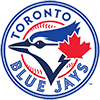 Matt Chapman, 3B, Blue Jays: Chapman had one of the most exciting performances in the league back in April, finishing the month with a .384/.465/.687 slash line, which was obviously juiced by a .485 BABIP but that also came with a promising 22.8 percent strikeout rate. Chapman's power was never in doubt, but high strikeout rates had typically kept him as a one-dimensional player at the plate. If he could continue to make contact at a league-average clip, there was potential for a breakout, but unfortunately, that hasn't been the case. From May 1 onward, he's struck out at a 29.5 percent clip and has hit just .211/.303/.363. He could have featured in this column at many points since then, but he earns a spot this weekend with things getting even worse in August. He's paired a 33.3 percent strikeout rate with a 4.5 percent walk rate this month en route to a .194/.242/.274 slash line. Chapman's contact quality remains strong — he's at a 12.2 percent barrel rate since the start of May — but any lingering hopes that Chapman's promising start foretold him reaching a new level in his age-30 should be long gone at this point.
Matt Chapman, 3B, Blue Jays: Chapman had one of the most exciting performances in the league back in April, finishing the month with a .384/.465/.687 slash line, which was obviously juiced by a .485 BABIP but that also came with a promising 22.8 percent strikeout rate. Chapman's power was never in doubt, but high strikeout rates had typically kept him as a one-dimensional player at the plate. If he could continue to make contact at a league-average clip, there was potential for a breakout, but unfortunately, that hasn't been the case. From May 1 onward, he's struck out at a 29.5 percent clip and has hit just .211/.303/.363. He could have featured in this column at many points since then, but he earns a spot this weekend with things getting even worse in August. He's paired a 33.3 percent strikeout rate with a 4.5 percent walk rate this month en route to a .194/.242/.274 slash line. Chapman's contact quality remains strong — he's at a 12.2 percent barrel rate since the start of May — but any lingering hopes that Chapman's promising start foretold him reaching a new level in his age-30 should be long gone at this point.
 Alex Cobb, SP, Giants: Cobb was a favorite pitching target of mine this past offseason, with the veteran coming off a pair of seasons with solid and nearly identical ERAs (3.76 and 3.73) that both came with a FIP south of 3.00, suggesting more sleeper potential than you'll find in most 35-year-olds. His first 10 starts made him look like a smart pick, as he cruised to a 2.17 ERA even as his 3.37 FIP suggested that he'd taken a slight step back. A 3.82 ERA and 2.76 FIP over his next seven outings was acceptable as well, as it was a near match for the version of Cobb we've seen over the last two years, but his 6.54 ERA and 5.98 FIP over his last six starts is perhaps cause for concern. The only game in which he gave up fewer than three runs or struck out more than four batters over that run was a no-run, nine-strikeout gem against the Athletics on July 25, but a strong start against opposition like Oakland isn't sufficiently reassuring. Cobb has lost the ability to put hitters away over this slump, with his strikeout rate falling from 22.4 percent to 15.6 percent. The veteran righty's velocity and pitch mix haven't meaningfully changed, which gives reason not to go overboard with any concerns, but given that he was always more useful for his floor than his ceiling, his appeal takes a big hit whenever that floor drops.
Alex Cobb, SP, Giants: Cobb was a favorite pitching target of mine this past offseason, with the veteran coming off a pair of seasons with solid and nearly identical ERAs (3.76 and 3.73) that both came with a FIP south of 3.00, suggesting more sleeper potential than you'll find in most 35-year-olds. His first 10 starts made him look like a smart pick, as he cruised to a 2.17 ERA even as his 3.37 FIP suggested that he'd taken a slight step back. A 3.82 ERA and 2.76 FIP over his next seven outings was acceptable as well, as it was a near match for the version of Cobb we've seen over the last two years, but his 6.54 ERA and 5.98 FIP over his last six starts is perhaps cause for concern. The only game in which he gave up fewer than three runs or struck out more than four batters over that run was a no-run, nine-strikeout gem against the Athletics on July 25, but a strong start against opposition like Oakland isn't sufficiently reassuring. Cobb has lost the ability to put hitters away over this slump, with his strikeout rate falling from 22.4 percent to 15.6 percent. The veteran righty's velocity and pitch mix haven't meaningfully changed, which gives reason not to go overboard with any concerns, but given that he was always more useful for his floor than his ceiling, his appeal takes a big hit whenever that floor drops.
 Leody Taveras, OF, Rangers: Taveras hit just .226/.280/.344 in 660 trips to the plate across his first three MLB seasons, but considering that those represented his age-21 through age-23 seasons and that he'd shown signs of progression, it was clearly too early to be out on him entirely. His hot start to this season, when he hit .302/.357/.495 in 57 games, therefore seemed to be the start of a promising young talent coming into his own rather than a mere hot streak. His .342 BABIP during that streak was slightly elevated, but the fact that he was striking out just 18.0 percent of the time — down from 25.8 percent in 2022 and 32.3 percent over the prior two years — seemed like reason to buy in. Unfortunately for those who did, Taveras has come crashing down hard over the last two-plus months. Since the aforementioned run ended on June 18, he's hit just .214/.235/.337 with one home run. His strikeout rate has worryingly backed up to 26.8 percent, and he's walking just 2.9 percent of the time. The good news is that Taveras' quality of contact remains very similar, but his path to success involves making an above-average amount of fringe-average contact and letting his legs do the rest of the work. If he's back to making a below-average amount of below-average contact, he's little more than a defense-first center fielder whose only real fantasy appeal comes in AL-only leagues.
Leody Taveras, OF, Rangers: Taveras hit just .226/.280/.344 in 660 trips to the plate across his first three MLB seasons, but considering that those represented his age-21 through age-23 seasons and that he'd shown signs of progression, it was clearly too early to be out on him entirely. His hot start to this season, when he hit .302/.357/.495 in 57 games, therefore seemed to be the start of a promising young talent coming into his own rather than a mere hot streak. His .342 BABIP during that streak was slightly elevated, but the fact that he was striking out just 18.0 percent of the time — down from 25.8 percent in 2022 and 32.3 percent over the prior two years — seemed like reason to buy in. Unfortunately for those who did, Taveras has come crashing down hard over the last two-plus months. Since the aforementioned run ended on June 18, he's hit just .214/.235/.337 with one home run. His strikeout rate has worryingly backed up to 26.8 percent, and he's walking just 2.9 percent of the time. The good news is that Taveras' quality of contact remains very similar, but his path to success involves making an above-average amount of fringe-average contact and letting his legs do the rest of the work. If he's back to making a below-average amount of below-average contact, he's little more than a defense-first center fielder whose only real fantasy appeal comes in AL-only leagues.
 J.D. Davis, 3B, Giants: Davis' move at last year's deadline from the Mets to the Giants, a team that seems to specialize in getting the most out of the J.D. Davises of the world, initially appeared to be just what the veteran slugger needed to develop into something more than an interesting part-time player. From last year's trade through this year's All-Star break, Davis hit .272/.354/.465 with 19 homers in 479 plate appearances, good for a 127 wRC+. His 30.1 percent strikeout rate over that stretch was elevated, but that's a figure which hitters have had success with as long as they pair it with legitimate power, and Davis' 13.6 percent barrel rate and 50.0 percent hard hit rate over that stretch certainly counted as legitimate power. Contact issues like that don't leave a player with much wiggle room, however, so with Davis striking out 36.0 percent of the time since this year's All-Star break, it's no surprise he's struggled to a .167/.258/.296 line (54 wRC+). The result has been a slight drop in playing time, as Davis has started against just four of the last seven righties the Giants have faced after previously starting against 14 of the last 15.
J.D. Davis, 3B, Giants: Davis' move at last year's deadline from the Mets to the Giants, a team that seems to specialize in getting the most out of the J.D. Davises of the world, initially appeared to be just what the veteran slugger needed to develop into something more than an interesting part-time player. From last year's trade through this year's All-Star break, Davis hit .272/.354/.465 with 19 homers in 479 plate appearances, good for a 127 wRC+. His 30.1 percent strikeout rate over that stretch was elevated, but that's a figure which hitters have had success with as long as they pair it with legitimate power, and Davis' 13.6 percent barrel rate and 50.0 percent hard hit rate over that stretch certainly counted as legitimate power. Contact issues like that don't leave a player with much wiggle room, however, so with Davis striking out 36.0 percent of the time since this year's All-Star break, it's no surprise he's struggled to a .167/.258/.296 line (54 wRC+). The result has been a slight drop in playing time, as Davis has started against just four of the last seven righties the Giants have faced after previously starting against 14 of the last 15.


